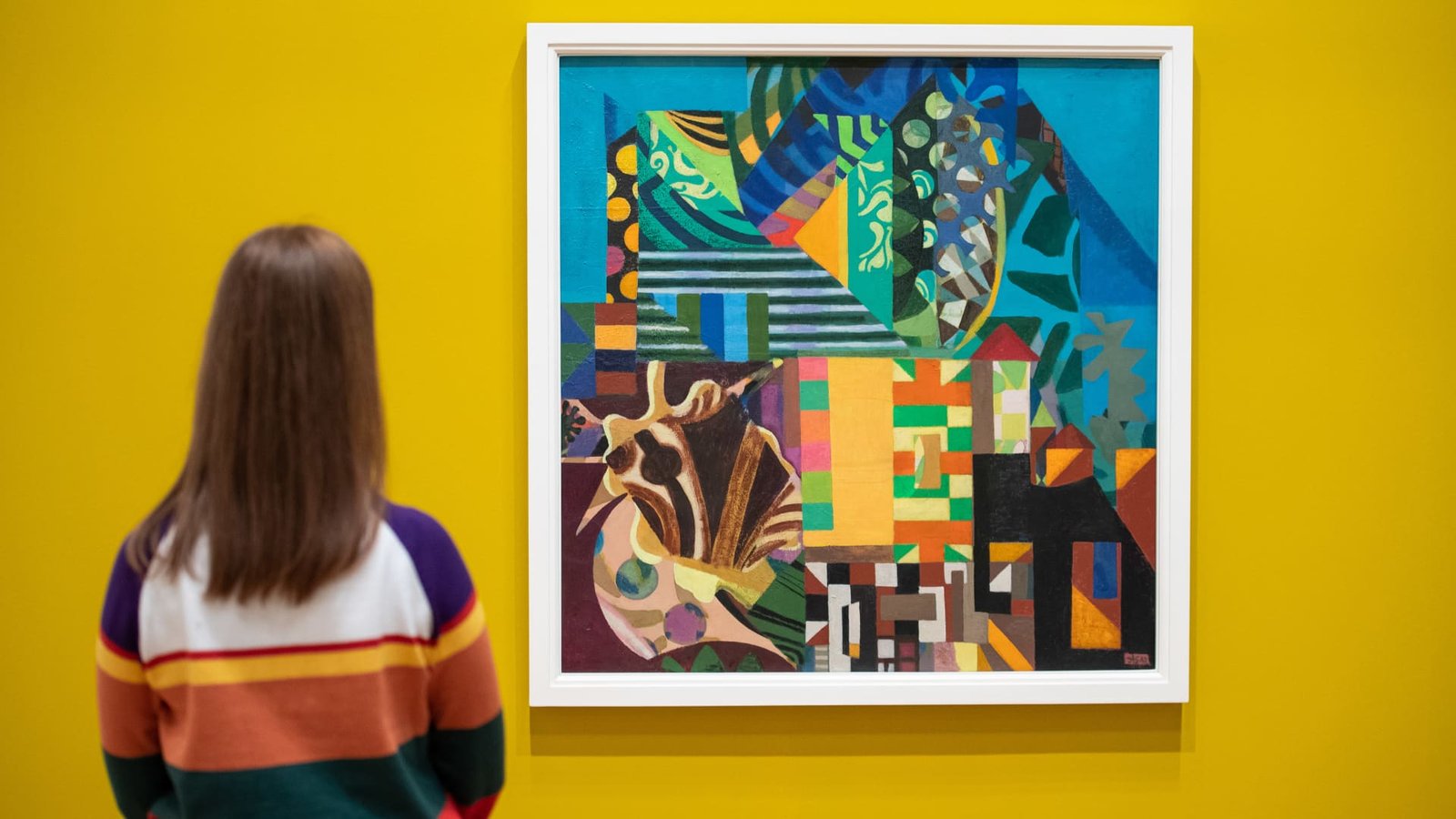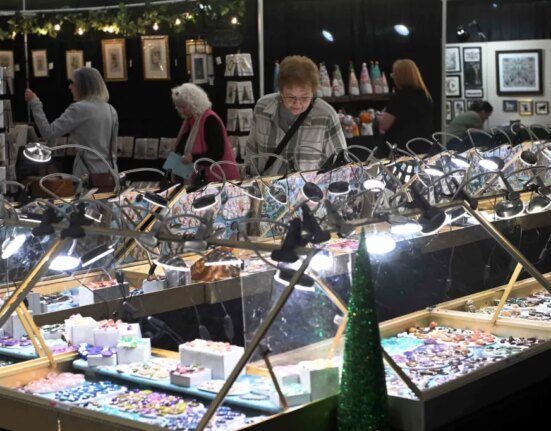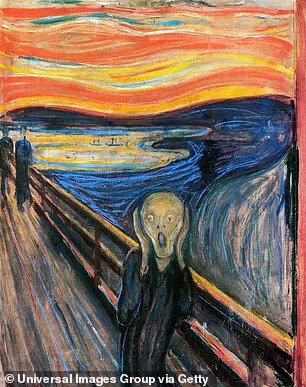Work by artist Nicholas Bowlby at The Affordable Art Fair on October 20, 2021 in London, U.K.
Puja Bhatia | Getty Images
You’ve got a mortgage, own your car and perhaps have a mix of safe-bet and more riskier stocks in your portfolio.
You have some disposable income, and you’d like to invest in some art for your home. Where to start?
Well, the experts CNBC spoke to consistently advised first-time collectors to do their research.
“You really can’t overestimate the importance of reading, of learning, of visiting museums, of honing your eye,” according to Karen Taylor, an advisor and dealer.
“And really … figuring out what it is that you like, because there is all the difference in the world between a collection and a bunch of stuff,” Taylor said, speaking to CNBC at the Winter Art & Antiques Fair in London, U.K.
“Collectors [should] go to as many gallery openings, degree shows and art fairs as they possibly can – that’s how they can develop their own preference and get a feel for what art they really connect with,” said Maria Artool, CEO of the International Body of Art, which organizes exhibitions, in an email to CNBC.
Will Ramsay, founder and CEO of the Affordable Art Fair, which puts on exhibits worldwide, said collecting art is easier than people might think. “You don’t need to be an art expert at all. Talking to people in the industry and visiting galleries is a great way to keep up to date with what’s happening,” he told CNBC by email.
But don’t expect to develop your taste quickly, Taylor said. “A collection is a journey, a lifetime journey for a lot of people,” she said.
Art as an investment
While more mainstream types of investment aim for a short or long-term return, art isn’t seen as something to buy and sell for quick gains, according to the people CNBC spoke to.
“There’s … an etiquette in the art world, where you can’t just ‘flip’ something, and we would never recommend doing that,” Robert Diament, co-host of the Talk Art podcast, told CNBC by phone.
However, contemporary art is likely to increase in value over the long term, Diament said. “I would say that 90% of the time, you’ll probably always get some kind of investment potential within art … The key thing is to buy something you love,” he said.
Death Mask by Tracey Emin, exhibited at the National Portrait Gallery in London, U.K., on June 19, 2023.
Carlotta Cardana | Bloomberg | Getty Images
Diament specializes in contemporary art and started collecting prints by British artist Tracey Emin about 20 years ago, he said. “I was really excited by the fact that she actually signs them, so you could … have the hand of the artist on the print,” he told CNBC. He paid “in the single thousands” for the pieces, which are now likely worth considerably more.
While he didn’t buy Emin’s work with the aim of making a return, he described its increasing value as “almost like an added bonus.”
There’s also a satisfaction in buying something from a living artist, Diament said. “Not only are you getting something really brilliant to live with that you like, but also you’re actually helping an artist continue their career,” he said.
The art market
At the top end of the market, art sold at auction saw sales growth of 30% when compared to other “investments of passion” such as watches, jewelry or wine, according to the Knight Frank Luxury Investment Index, which looked at collectibles’ performance in the 12 months to the end of June.
Knight Frank’s data comes from consultancy Art Market Research, which keeps a record of artists whose work has sold at global auction houses such as Christie’s and Sotheby’s more than 30 times in two years, and is largely made up of modern, contemporary and impressionist artists.
Meanwhile, the Affordable Art Fair is expanding, Ramsay said. Having hosted 14 fairs in 2023, it will launch events in Austin, Berlin and Brisbane next year. Cities are keen to help new artists exhibit and sell their work, he added.
A woman views an artwork at the “Eileen Agar: Angel Of Anarchy” exhibition At Whitechapel Gallery on May 14, 2021, in London, U.K. Art experts recommend people visit galleries to hone their taste before investing.
Jeff Spicer | Getty Images
While some collectors might think about their legacy in later life, and decide to donate works to a museum, others may leave pieces to family members as part of their estate, meaning art returns to the market. “Others are very happy to put it all back into the market … and let someone else have the fun,” Taylor said.
Taylor handled the sale of a drawing by George Romney, a Study of Satan for The Fall of the Rebel Angels in the 1990s, which she now has for sale again. “You do need a constant supply of things coming back,” she said.
“When inflation starts, works of art hold their value,” Taylor added.
What — and where — to buy
Limited edition prints are a good place to start, Diament said, and he recommended House of Voltaire, where people can buy online or in-person at its London gallery.
A signed print by the British artist Magda Archer titled “It’s not all about the ‘likes'” is for sale on the site for £60 ($74.20), while works by the Latvian painter Ella Kruglyanskaya start at £500.
The Carl Freedman Gallery, of which Diament is a director, is currently exhibiting works by “social realist” artist Benjamin Senior, starting at around £7,000. Senior works with egg tempera — popular during the Renaissance era — where egg yolk is mixed with pigment to create paint that is built up over many layers to create an image.
Senior produces a handful of pieces per year. “His price point is still really affordable for the fact that they’re so rare,” Diament said.
Taylor, meanwhile, specializes in British watercolors from the 18th to early 20th century, known as the “Golden Age” of the technique. “It was an era when there was a great flowering of talent … it coincided with a period when Britain was a very prosperous place, there was a market for their work,” Taylor said.
A woman views ‘Venice: the Piazza San Marco’ by British watercolor artist Richard Parkes Bonington at the Wallace Collection, London, in September 2023.
Judith Burrows | Hulton Archive | Getty Images
For a budget of £10,000, you could buy five to 10 pieces from the period, Taylor said. “It’s a fabulous field, and it is affordable … you could really start a very decent collection,” she added.
Many newer buyers focus on a particular region or style and build highly curated collections over time, Taylor said. One of her clients, a young American man, frequently travels and likes landscape paintings of countries in Europe. “He came back to me after a couple years and said [he’d] decided to focus totally on Italy, because otherwise the collection is getting a bit disparate,” Taylor said.
“Some people like color, other people like to focus on drawings without color … you have people who collect just one artist,” Taylor said. “Some people do like portraits, and it doesn’t seem to matter that they are other people’s ancestors. If they have an interesting face, they have a sort of universal appeal,” she said.
Art is sometimes seen as elitist, Diament said, but there’s no need to be intimidated. Small, local galleries are likely keen for people to visit them, and you may get to see works before others, he added. “It’s often the first time it’ll ever have been exhibited, and there’s something really exciting about that,” he said.
Ramsay’s advice is to buy something because you love it. “Before committing, take some time to think about it … art should have some sort of longevity. Some art can immediately spring out at you for whatever reason. But on reflection, you may realize it won’t keep your interest. You’ll know it’s meant to be yours if you keep thinking about it,” he said.
Artool said the International Body of Art encourages buyers to “become a part of the artistic process,” via studio visits, and people are sometimes given the chance to help curate exhibitions with the artist. “It removes barriers that would traditionally be present when traditionally buying a piece of art,” she said.
Buying at auction
Auctions can be a good place to buy art, partly because they provide access to an open market but also because top auction houses have specialists that buyers can consult, according to Isabelle Paagman, Sotheby’s senior international specialist for contemporary art.
When choosing what to bid on, work out what you like, and set yourself a budget, Paagman said. “It is always about what you respond to and then you do the research to back it up. It also really depends on the mission that you give yourself and the budget that you want to allocate,” she told CNBC by email.
Provenance — which refers to the history and ownership of a piece — is often an important consideration when buying art.
“An artwork bought at auction will, more often than not, have an exciting history attached to it too, and when you acquire it, you become a part of that history. You’re getting involved in a lineage of highly esteemed provenance,” Paagman added.
A large fresco by the American artist Shepard Fairey on the wall of a building in Paris, France. Sotheby’s has a number of Fairey’s prints for sale online as part of its ‘collection starters’ range.
Chesnot | Getty Images
While buyers can see and bid for pieces online, Paagman advised viewing something in real life if you can, “to feel and understand the emotive response you get from it,” she said.
Along with the hammer price — the final bid accepted by the auctioneer — of an artwork, fees such as tax and shipping charges will be added. There’s also a buyer’s premium, which at Sotheby’s is 26% of the hammer price for pieces up to £800,000.
If bidding at auction doesn’t appeal, Sotheby’s also has a ‘buy now’ selection, available for immediate purchase. A “collection starters” range features artworks for under $2,000, including several prints by American artist Shepard Fairey.
“There is something to be said about not setting yourself a whole set of rules when approaching the art world, because it should also be fun,” Paagman said.







